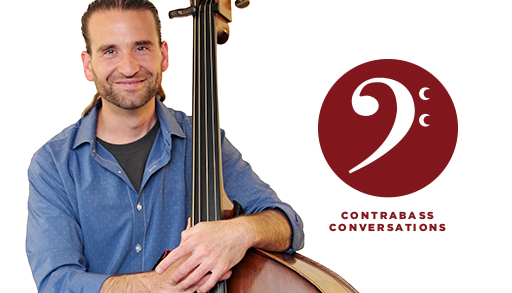This week on Contrabass Conversations, we’re bringing you rare footage of Serge Koussevitzky performing a few selections. Enjoy this trip back in double bass history, brought to you by double bassist John Grillo.

Previous Contrabass Conversations episodes featuring John Grillo include:
- Ed Barker interview
- The State of the Orchestra
- Differences in Opera and Orchestra Playing
- Opera Excerpt Breakdown
- Orchestral Excerpt Breakdown
- Owen Lee interview
- Max Dimoff interview
- Dan Krekeler interview
- Ranaan Meyer interview
- Lawrence Hurst interview
- Jack Budrow interview
- Barrie Kolstein interview
- John Grillo Recital Showcase
- John Grillo interview

Koussevitzky was primarly a very good conductor and then a double bass player. What we have listened to his a remarkeble execution of his pieces with the exception of all the concert because probably he was no able to play it correctly. But one point it’s interesting, that’s if he push down the string in thumb position or if he pull of the left the same string. It’s difficult to have a correct opinion because sometime it seems to push the string but in other cases using a lot of glissato we need the sensation thet he pull off the string. By the way the tuning is quite correct and this is the demonstration that Koussevitzky was a talent man not only as a condoctor (many years with Boston Symphony). Recording, naturally is no good but we have the sensation that it was very hard to play in the thumb position, while today with a good teacher is quite affordable. Finally I think Koussevitzky pushed the string because the glissando is limited. In the opposite case the glissato would have been much more evident.
see you
Vito
Thanks for providing these recordings. I have wanted to hear them for many years. BTW, I heard a reference in the interview to the Amati. According to the study performed of the K. Bass, which was described in “Bass World”, Volume 29, Number One, 2005, the estimate was that the instrument was built between 1775 and 1790. This is after the Amati family period.